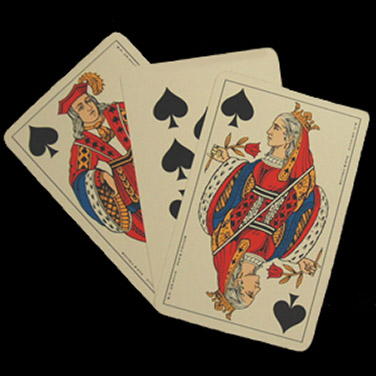Baccarat

The classic card game of chance is played with six French decks of fifty-two cards. The cards are shuffled and placed in a dealing box, which goes around the players. The banker deals two cards each to him or herself and the opponent with the highest stake, the "ponte". If need be, a third card can be drawn. The aim is to get as close to nine points as possible by totting up the values on the cards. If the total score is higher than ten, the leftmost digit is discarded. A ten therefore scores zero points and is referred to as baccarat. The winner is the player with the highest score.
History
The game was supposedly invented in Italy in the mid-fifteenth century and the name is said to be derived from a word for zero in Neapolitan dialect. If this theory is correct, baccarat is one of the few card games from the Middle Ages to have survived. Later, the game became very popular among the French aristocracy. The rules played today stem from French casinos at the end of the eighteenth century.
Mathematics
This is a game of chance with a distinct strategic component. In fact, the players can decide whether they want to take a third card under certain conditions. If the opponent takes a card, they have to show it, which gives the banker an advantage. An early study of the question as to whether it is favourable to take another card when you have a score of five during baccarat appears in a textbook on probability calculus by Joseph Bertrand in 1889. Bertrand compares the various decision possibilities of the player and the banker, presupposing that the opponent's strategy is known. The game-theory question was solved by John G. Kemeny and J. Laurie Snell in 1957 by specifying optimum strategies for the player and the banker.